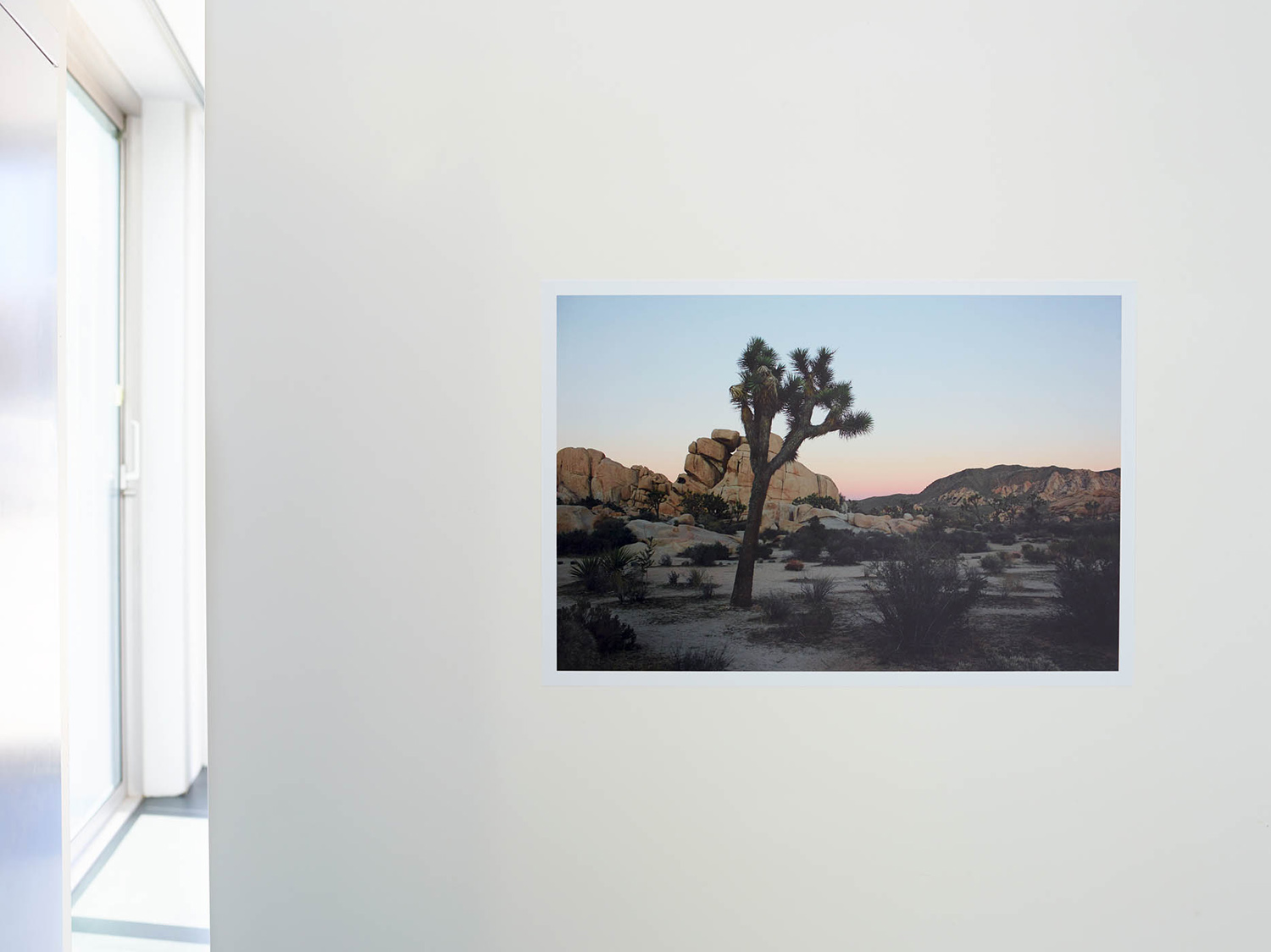Opening, March 21, 2019, 7 pm
Exhibition, March 22 – April 26, 2019
Kathi Hofer takes up in her work pre-existing, “used” materials and ideas, processes them thoughtfully, and then re-inscribes them in the production cycle from whence they came. Resembling a recycling process, her artistic endeavors revolve around the procedures deployed in cultural and artistic production, focusing not least on the creative act itself. The artist appropriates specific techniques of meaning production and extracts patterns from them, which she in turn feeds into her own art production and hence back into the production of meaning.
Kathi Hofer’s photographs, installations, and object arrangements address issues that are innate to art and yet take their subject—art and its potential for identification—to extremes. She invokes a variety of role models—from René Magritte and the fashion designer Kenzo, to the knitted products marketed by her own family, who through the invention and serial production of the “Hofer Janker” jackets and vests had a hand in shaping the so-called “Austrian Style”—all the way to the anonymous authors who write “fan fiction” on the internet. Historical as well as current artistic positions play a part in Hofer’s non-hierarchical repertoire. Through repetition, the practices she references turn into repeating patterns—and are then combined to form more complex themes.
In the exhibition Cabin Essence at Kunstraum Lakeside, Kathi Hofer looks at California as a place that sparks the imagination and opens up horizons of meaning. She links the “Californian dream”—associated with progress and new beginnings, economic dynamism, the hunger for discovery and for finding or inventing oneself – with her own work in the studio and with the real and imagined spaces of visual art. Hofer focuses here in particular on a town in the Mojave Desert called Pioneertown, where she traveled several times over the past two years to take photographs and make field recordings. Designed and built in the 1940s by the three Hollywood actors Dick Curtis, Roy Rogers, and Russell Hayden as a Western film set that also functioned as a “real” town, this setting manifests a mix of historical and genre-like forms, of commercial and community elements, that blend to create a unique architectural and socio-economic fabric. In Pioneertown, now itself a legendary replica of an even older legend, the illusion created by the false fronts summons by turns the two myths that still shape the representative style of the “American West”—the Californian Gold Rush in the mid-nineteenth century and the golden era of the Hollywood studio system in the mid-twentieth century.
Kathi Hofer integrates into her expansive installation at Kunstraum Lakeside both photographs and drawings, model-like replicas and objets trouvés, in order to blend interior and exterior spaces through the interplay of the exhibits. In the process, she undertakes minimal, carefully considered shifts of perspective, (re-)calibrating shots in order to sharpen our perception of the conceptual context she wishes to address as well as the spatial context of the exhibition space, deliberately measuring distances and relationships. Pencil, mirror, and paper are employed here as tools for self-reflection and also find their way into the setting as “works” in their own right. These are ordinary everyday objects and materials, and yet in their significance, in their value, they point beyond themselves: as emblems of the artistic (self-)image or projects directed towards the future. Kathi Hofer’s working method involves the use of the “small form”—bricolage, the model, or role play—to imitate monumental forms and sweeping narratives and in this way re-enact them.
Another method found throughout Hofer’s oeuvre is the practice of appropriation through calling things by name. The title she gave this show, Cabin Essence, is an example of such appropriation. She borrowed it from a song by the Californian band The Beach Boys that was recorded incompletely in 1966 and only released decades later, renamed Cabinessence. On the invitation card for the exhibition, Kathi Hofer combines the title with two drawings she commissioned from the illustrator Daavid Mörtl to picture for her this “Cabin Essence”. The two images function like the cover of a book or album: as frame for a certain context.
Thanks to Jayne Hayes and Daniel Paul.
Kathi Hofer (b. 1981 in Austria) lives and works in Berlin and Vienna.
www.kathihofer.com

Kathi Hofer, Cabin Essence, 2019, illustriert von Daavid Mörtl









